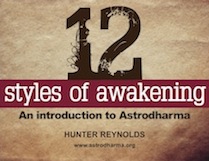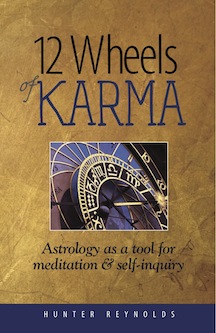 124 MILES ABOVE US — extending, as best we know, to eternity — is a dark, soundless vacuum whose temperatures hover between 233-454 degrees below zero. Meanwhile, down here in Gaia-land, a more temperate layer of this mind-killing abyss flushes through us like water through the gills of a fish. Yet, still, we fall down to the god of form.
124 MILES ABOVE US — extending, as best we know, to eternity — is a dark, soundless vacuum whose temperatures hover between 233-454 degrees below zero. Meanwhile, down here in Gaia-land, a more temperate layer of this mind-killing abyss flushes through us like water through the gills of a fish. Yet, still, we fall down to the god of form.
Does its transparent quality alone account for how dogmatically we persist in overlooking space? Is there a connection between how we move through outer space and how we inhabit inner space? Can we truly come into right relationship with people, places and things if we are numb to the milieu they float in? And finally, could “enlightenment” be code for “space-sensitive?”
For answers to these questions, let us turn to the three sky signs: Gemini, Libra and Aquarius.
As a medium through which to move, explore and connect through communication, space correlates with the Gemini archetype. As we bridge space more intimately through our ongoing, one-to-one relationships, we access Libra. Experiencing an Aquarian sense of community throws an even broader net over our spacial “evidence of separation.” Each of these space-worthy archetypes has a style of closing the gap.
Before we go any further into this correlation between archetype and emptiness, it’s important to understand why space got shoved, so brutally, into the perceptual back seat. It was not always so. The Greeks believed that when we die we return to the star we came from — thus their avid interest in astrology. For them, staring into the sky was like leafing through the family photo album. Astrology was nostalgia.
The ancient meditative practice of “sky-gazing” (also called “space-mingling”) is most commonly ascribed to the Dzogchen branch of Tibetan Buddhism. In truth, however, this bare bones encounter with the seamless field of sentience that surrounds and interpenetrates us is common to all contemplative faiths and cultures. Perhaps the most secularizing impact of early childhood education is its insistence on shifting the naturally diffuse, infant eye away from “negative” space into a more form-fixated state. Putting aside whether this is an indispensable part of psychosocial integration and bodily survival or an institutionalized denial of oneness, it is clear that whether we’re abiding as inner sky or mingling with the outer one, sky-gazing is the broadly accepted essence of meditation.
It isn’t hard to understand what motivates these cross-cultural meditations on the void. Failing to cultivate a conscious relationship with space, how can we ever hope to know the nature of what moves through it? Is not encountering the nature of the sky that hosts us at least half of any honest existential inquiry?
Disagreement continues between philosophers over whether space is a separate thing, an interconnecting medium between things, or an interpenetrating part of our conceptual framework (ie. “us!”) The following is a summary of the three basic approaches to the philosophy of space:
1-Space as self-existing phenomenon. In Isaac Newton’s view, space exists permanently and independently of matter and its nature is uninfluenced by whether or not there is any matter in the space.
2-Space as relationship. Gotfried Leibniz thought of space as a collection of relations between objects. In the same way that one must — in order to understand a human family — take into account both the nature of the individuals and the relationships between them, so, too, one cannot accurately comprehend space apart from objects. In other words, space could not exist independent from objects because that implies a difference between two universes (space and form), exactly alike except for their location.
3-Space as Consciousness. Emmanuel Kant saw space as both self-existent phenomenon and as a web of relations. Instead of being an objective feature of the world, space was considered the framework human beings use to structure and organize their experience. In this sense, space was seen as an interpenetrating feature of human consciousness.
Wow. If you’re anything like me, you’re wondering why all talk of space was omitted from your schooling. There must have been a good reason why inquiry into the nature of the cosmic stuff that presses so relentlessly against us was x-ed from the curriculum. Why is discussion and contemplation of space so taboo?
Something disturbing happens when we bring lucidity to transparency — when we “see ourself seeing.” We don’t just see through space, we see as space. Outlook and inlook blur. Suddenly, the ocean of invisibility that parts so graciously in front of us is seen for what it is: the phenomenological face of eternity — the awesome, ethereal substance from which all names and forms crawl forth and return. To all-pervading spirit, this conscious encounter with space is a homecoming. To our sharp-edged, time-bound sense of self, however, this stuff is Kryptonite.
At any given moment, our true feelings about space can be discerned by how we breathe it. With each inhalation we are impaled by an infinitely extending nothingness that enlivens even as it mocks our puny proportions. To consciously nurse on the breast of space, we also drink in the eons of time it takes to move through it. This sweet milk of spirit is, to ego, a bewildering chasm, endlessly echoing with life forms and lifetimes. To suck here is to watch the momentous concerns and dramas of our shrinking birth/death interval be unceremoniously reduced to a blip. Ego doesn’t “forget” to breathe; the omission is a matter of survival.
Beneath its contrived, thumbs-up demeanor, personality knows that all times – good or bad – mark the rate at which its precious river of stories slowly and inexorably flow back into emptiness: the dreaded eternity we pretend so hard not to be strolling through. To ego, having a “good time” (or space) is an oxymoron. While our now-drunk senses swoon in the jasmine-laced breeze, our me-stories cringe at this cruel reminder of their ephemeral, passing nature.
Why is meditation so disorienting? Because ego has to keep thinking, feeling and doing – manically parting inner and outer space – in order to feel solid, valid, a self-existent somebody. Minus movement, unbounded sentience naturally returns to itself. Space returns to space!
In a very real way, then, space – as a purely dimensional measurement – is our nemesis because it keeps us separate, alone and, for the majority of our lives, psychologically unknowable. To the extent that the gown of personality drapes thick, and our attention is turned away from the pure, unbounded, awareness that unites us, space hurts. Not even in the throes of deep meditation do we find complete relief from the sharp cut of space since resting as undivided consciousness opens and sensitizes us to the countless souls who are, at this very moment, feeling “showered in the spit of pronounceable sound.” Caressing the texture of space, we come face-to-face with the wounds of the collective heart.
This commonly denied, but nonetheless continual, entrainment with the collective is, no doubt, what inspired the Buddha to teach that no soul can become fully awakened until all souls are. It also explains why flashes of enlightenment correlate with the most all-inclusive, community-conscious archetype: Aquarius.
Most egos like the idea of oneness and having their hearts broken open into compassion so long as this tuning in to the larger field doesn’t, at times, involve feeling emotionally pierced and endarkened by the billions battered by waves of meaningless suffering. Welcome to the tearless malaise of the insincere practitioner.
What is space? Ego knows. It’s Kali, the ego killer. Stare into her faceless face with any regularity and she’ll add you to her blessed belt of skulls. Fail to look, and she’ll send you running for the rest of your life until you grow so cynical with the false promise of form, you’ll be forced to take refuge in the stare of lesser Kali’s: addiction, body-numbing distraction and, at best, a lifetime membership in that self-important sangha: the fellowship of weary witnessers.
How can we see through the sharp cut of space to the field of pressed-together hearts? How can we recover the timeless buoyancy of who we are? I will close with a few tips from the three “sky” signs.
Awakened Gemini:
Graze wide fields of personality. Find the one taste.
Inquire: What are the now-born words that ventilate your own and others stuffy sense of “me-ness”?
Learn to linger in conversational pauses until silence grows a tongue – it’s wiser and more articulate than mind could ever be.
Awakened Libra:
Sense into the sacredness of all conflict: a storyless presence in the throes of waking up to itself. Now you’re poised for an effective mediation.
Step 1: Let storyless presence fall hopelessly in love with itself in the mirror of so-called “others.” Step 2: Notice if, when and how much the body/mind wants to follow suit. No forcing!
See clashing and caressing as equally inept forms of intimacy – minus the greater fragrance of oneness.
Awakened Aquarius:
Recognize: Uniquely desperate times make egos feel uniquely solid and perversely special. Without them we would be thrown back into our soft, now-stricken bodies to feel and heal the real tragedy: the burden of the separate self.
When “the condition of all conditions” first starts flickering into view, what was once an infinitely varied, excitingly open-ended world of possibilities can start to feel creepily monotone and flat. Abide as sky-gazer and follow the pull of the greater heart.
Ask: What’s the difference between equanimity and emotional numbness? The first meets the world’s suffering with heartfelt tenderness and understanding; the second tries vainly to step over it.
…
In the final analysis, we have only one freedom: to relate across space or AS space.
Ready for more?
-Click here to learn about the upcoming Styles of Awakening online training.
-Click here to schedule an astrology reading with Hunter.
-Click here to subscribe to Styles of Awakening Newsletter (monthly).
-Click here to subscribe to posts by email.
Like this article? Share it with friends:


 Get free newsletter & e-book
Get free newsletter & e-book